Sushant Rathi
Knowledge Base Completion: Baseline strikes back (Again)
May 02, 2020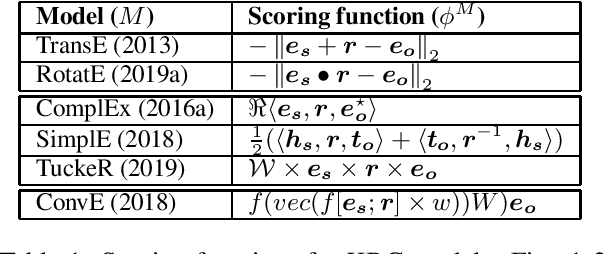
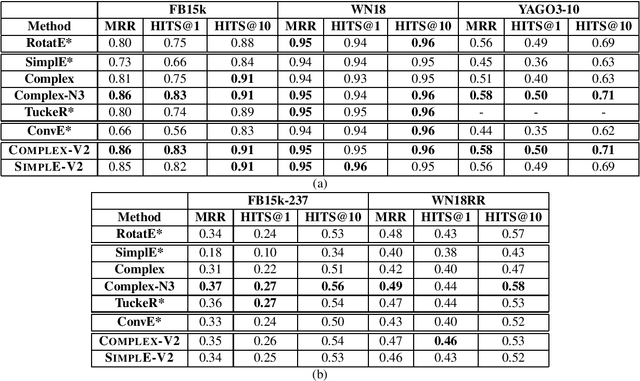
Abstract:Knowledge Base Completion has been a very active area recently, where multiplicative models have generally outperformed additive and other deep learning methods -- like GNN, CNN, path-based models. Several recent KBC papers propose architectural changes, new training methods, or even a new problem reformulation. They evaluate their methods on standard benchmark datasets - FB15k, FB15k-237, WN18, WN18RR, and Yago3-10. Recently, some papers discussed how 1-N scoring can speed up training and evaluation. In this paper, we discuss how by just applying this training regime to a basic model like Complex gives near SOTA performance on all the datasets -- we call this model COMPLEX-V2. We also highlight how various multiplicative methods recently proposed in literature benefit from this trick and become indistinguishable in terms of performance on most datasets. This paper calls for a reassessment of their individual value, in light of these findings.
Temporal Knowledge Base Completion: New Algorithms and Evaluation Protocols
May 02, 2020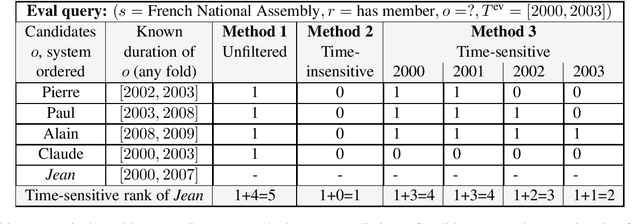
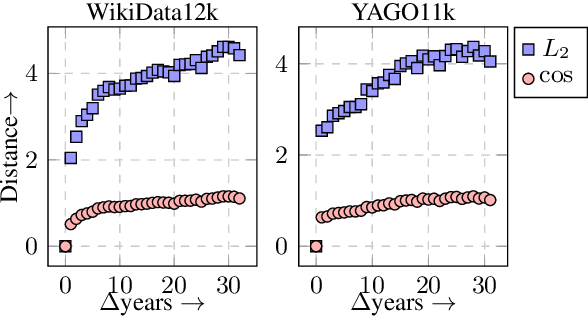
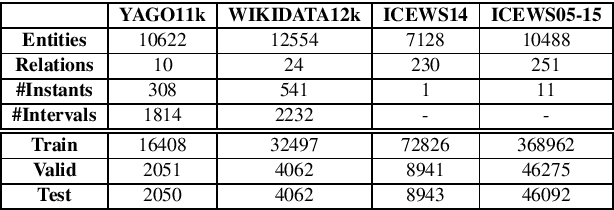

Abstract:Temporal knowledge bases associate relational (s,r,o) triples with a set of times (or a single time instant) when the relation is valid. While time-agnostic KB completion (KBC) has witnessed significant research, temporal KB completion (TKBC) is in its early days. In this paper, we consider predicting missing entities (link prediction) and missing time intervals (time prediction) as joint TKBC tasks where entities, relations, and time are all embedded in a uniform, compatible space. We present TIMEPLEX, a novel time-aware KBC method, that also automatically exploits the recurrent nature of some relations and temporal interactions between pairs of relations. TIMEPLEX achieves state-of-the-art performance on both prediction tasks. We also find that existing TKBC models heavily overestimate link prediction performance due to imperfect evaluation mechanisms. In response, we propose improved TKBC evaluation protocols for both link and time prediction tasks, dealing with subtle issues that arise from the partial overlap of time intervals in gold instances and system predictions.
 Add to Chrome
Add to Chrome Add to Firefox
Add to Firefox Add to Edge
Add to Edge